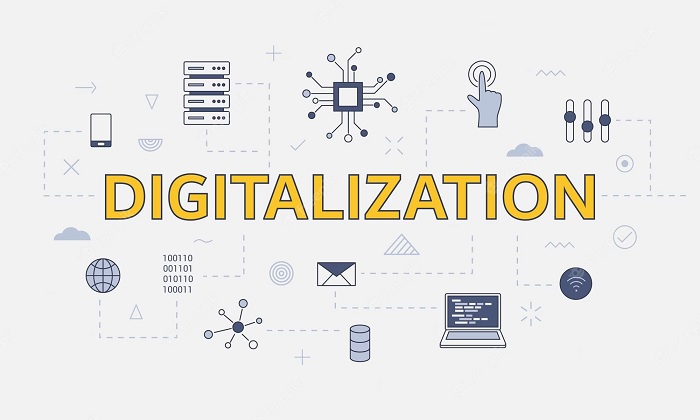Artificial Intelligence
Synthetic Monitoring and its Importance in Digitization

Businesses rely heavily on websites, applications, and other digital assets to reach and interact with customers in today’s digital world. These assets play a critical role in the customer experience and, ultimately, the success of a business. That’s why synthetic monitoring is so crucial in the digital era.
Synthetic monitoring involves using AI testing to regularly test the performance and availability of these digital assets in a simulated environment. By proactively identifying and resolving issues before they impact real users, businesses can ensure that their digital assets are always performing at their best.
In this blog post, we’ll delve into synthetic monitoring in the digital era and discuss why it’s becoming increasingly crucial for businesses of all sizes.
What do you understand by Synthetic Monitoring?
Synthetic monitoring involves using digital experience monitoring tools to regularly test the performance and availability of websites, applications, and other digital assets in a simulated environment. These tools are designed to simulate fundamental user interactions with the monitored assets, such as visiting a website or using an application, and can be configured to perform these tests at regular intervals.
Synthetic monitoring is to identify and resolve issues before they impact real users proactively. By regularly testing the performance and availability of digital assets, businesses can ensure that these assets are consistently functioning as expected and that users are not impacted by issues such as slow loading times or unavailable pages. Synthetic monitoring can also help businesses identify potential problems before they become critical, allowing them to take proactive steps to resolve them.
Why use synthetic monitoring?
There are several reasons businesses may use synthetic monitoring to test the performance and availability of their websites, applications, and other digital assets. Some of the critical benefits of synthetic monitoring include the following:
- Proactive issue identification and resolution: Synthetic monitoring allows businesses to identify and resolve performance issues before they impact real users. This can prevent user frustration and improve the overall user experience testing.
- Improved performance and availability: By identifying and resolving performance issues, synthetic monitoring can help improve digital assets’ overall performance and availability. This can lead to a better user experience and a more robust bottom line for the business.
- Increased customer satisfaction: By ensuring that digital assets always perform their best, businesses can improve customer satisfaction and build trust with their users.
- Cost savings: By proactively identifying and resolving performance issues, businesses can avoid the costs associated with downtime or other performance issues. This can include lost revenue, repair costs, and managing and resolving customer complaints.
- Improved efficiency: Synthetic monitoring can help businesses to streamline their performance monitoring process, allowing them to focus on other tasks and initiatives.
How does synthetic monitoring work?
Here’s a general overview of how synthetic monitoring works:
- Identify the assets to be monitored: The first step in synthetic monitoring is to identify the digital assets that need to be monitored. This may include websites, applications, APIs, servers, or other infrastructure components.
- Set up the monitoring tools: These digital experience monitoring tools must be configured and set up. This may involve specifying the locations or devices from which the assets will be accessed and the specific tests that will be performed.
- Simulate user actions: Once the monitoring tools are set up, they will simulate the actions of a user accessing the assets from the specified locations or devices. This may involve loading a website, clicking on links or buttons, or making API requests.
- Collect and analyze data: As the monitoring tools perform the tests, they will collect data on the performance and availability of the assets. This data is then analyzed to identify any issues or abnormalities.
- Notify of issues: The digital experience monitoring tools will typically send notifications to alert the relevant parties if any problems are identified during the testing process. These notifications may be sent via email, SMS, or other means.
- Resolve issues: Once a problem has been identified, it can be addressed and resolved by the appropriate team or individual.
Overall, synthetic monitoring aims to identify and resolve issues before they impact real users, ensuring that the assets are always performing at their best and providing seamless user experience testing.
What are the benefits of Synthetic Monitoring?
There are several benefits to using synthetic monitoring to test the performance and availability of websites, applications, and other digital assets. Some of the key benefits include:
- Proactive issue identification and resolution: By regularly testing the performance and availability of digital assets, businesses can identify and resolve issues before they impact real users. This can prevent user frustration and improve the overall user experience.
- Improved performance and availability: By identifying and resolving performance issues, synthetic monitoring can help improve digital assets’ overall performance and availability. This can lead to better user experience testing and a more robust bottom line for the business.
- Increased customer satisfaction: By ensuring that digital assets always perform at their best, companies can improve customer satisfaction and build trust with their users.
- Cost savings: By proactively identifying and resolving performance issues, companies can avoid the costs associated with downtime or other performance issues. This can include lost revenue, repair costs, and managing and resolving customer complaints.
- Improved efficiency: Synthetic monitoring can help businesses to streamline their performance monitoring process, allowing them to focus on other tasks and initiatives.
Conclusion
In conclusion, synthetic monitoring is a crucial aspect of maintaining the performance and availability of digital systems in the modern era. The increasing reliance on technology and the growing number of devices and platforms have made it essential to have a proactive approach to monitoring the performance of digital systems. Synthetic monitoring allows organizations to simulate fundamental user interactions and identify potential issues before they affect the user experience. By implementing digital experience monitoring tools, organizations can ensure that their digital systems are performing optimally and can quickly address any issues that arise. In the fast-paced and competitive digital landscape, synthetic monitoring is a critical tool that can help organizations stay ahead of the curve and provide a seamless user experience.

-
Blog12 months ago
MyCSULB: Login to CSULB Student and Employee Portal – MyCSULB 2023
-
Android App2 years ago
Cqatest App What is It
-
Android12 months ago
What Is content://com.android.browser.home/ All About in 2023? Set Up content com android browser home
-
Software2 years ago
A Guide For Better Cybersecurity & Data Protection For Your Devices
-
Latest News2 years ago
Soap2day Similar Sites And Alternatives To Watch Free Movies
-
Android2 years ago
What is OMACP And How To Remove It? Easy Guide OMACP 2022
-
Android3 years ago
What is org.codeaurora.snapcam?
-
Business2 years ago
Know Your Business (KYB) Process – Critical Component For Partnerships






























